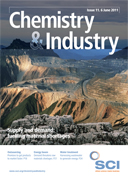Probiotics – commonly known as ‘good bacteria’ – are thought to benefit human health and well being. With public confidence in pharmaceuticals at an alltime low, probiotics and other so-called alternative products are enjoying rising popularity.
The global probiotics market is expected to record a compound annual growth rate of 12.6% from 2009 to 2014, when it will be worth $32.6 billion, according to the report Probiotics Market (2009–2014), published by MarketsandMarkets. Probiotic food and drinks – largely dairy products, such as yoghurts – command the lion’s share of the market, while supplements account for about a third. Approximately five million people in the US and EU used probiotic supplements on a regular basis in 2010, according to a Datamonitor Business Insights on Probiotics and prebiotics in clinical nutrition.
But do products labelled as probiotic do what they claim?
Probiotics defined
Probiotics are ‘live microorganisms that when administered in adequate amounts confer a health benefit on the host’, according to a definition published by the United Nations Food and Agriculture organisaton (FAO). Gregor Reid, who was chair of the panel that came up with it, says the definition is widely accepted in the scientific literature, less so in industry, and largely ignored by sales and marketing teams. As a result, among the items he has seen advertised as ‘probiotic’ are bread, mattresses and floor cleaners. The resulting lack of credibility is a big problem for consumers, who could either be wasting their money or buying something that won’t help them. ‘We need scientific studies just for the term “probiotic”,’ says Reid.
Another problem is that claims for the health benefits conferred by probiotics range from the confusing – for example, ‘balances intestinal flora’ – to the questionable – for example, ‘prevents cardiovascular disease’.
Generally, probiotics can be divided into two groups: lactic acid-producing bacteria, which help to reduce permeability and increase immune response in the intestines; and non-lactic acid bacteria, which increase acidity in the stomach, says Alison Sahoo, Datamonitor pharmaceutical industry analyst. some microbes are considered safer than others. For people with impaired immune systems, some of these microbes could cause considerable harm.
The World Health Organization’s position is that any type of health claim for a probiotic should be backed by science. And, in 2008, the International Probiotics Association established voluntary labelling guidelines.
However, many claims are unsubstantiated, while the studies that support others vary greatly in quality and relevance. For example, an 80,000-person study in Sweden showed that probiotics taken over a long time can reduce the incidence of bladder cancer (Am. J. Clin. Nutr., 2008, 88, (4), 1083) but to date only animal studies have shown that probiotics may affect cholesterol levels.

Regulatory inconsistencies
In an effort to protect consumers from bogus products, an EU regulation overseeing health claims on food products came into force in July 2007. However, the European Food Safety Authority (EFSA), which verifies supporting scientific evidence, has subsequently rejected virtually all the probiotic claims submitted, but not made it clear how to get such assertions approved (C&I, 2010, 13, 14). Recently, EFSA dismissed a claim for Actimel, Danone’s yoghurt drink, based on a study published in the British Medical Journal.
EFSA’s policing has led to a rising number of manufacturers withdrawing products from the market, says Sahoo. ‘[The Health Claims Directive] is a real challenge for the industry and it will certainly slow down product development and innovations,’ adds Isabelle Champié, global marketing director for Institut Rosell, the human health and nutrition division of Lallemand, a yeast and bacteria company. ‘With the level of clinical documentation requested by EFSA, only big companies will be able to provide the dossiers [required],’ she says. Indeed, Institut Rosell uses gene mapping to identify probiotic strains, microbiology methods to define their biological properties, animal studies to help elucidate modes of actions and clinical studies to demonstrate beneficial effects in human, says Champié.
Moreover, treating probiotics like drugs may not be appropriate. As well as being living organisms, their benefits are linked to their biological activity and interactions with the host microflora, an extremely complex and organised ecosystem that can be affected by such factors as age, diet, medications and stress. ‘We are far from the receptor/effecter interactions here and the possible modes of action for probiotics are extremely diverse, depending on the condition or the strain used,’ says Champié.
EFSA rejection does not necessarily mean probiotic benefits are not real. Sahoo points out that most of EFSA’s rejections have been based on technicalities, such as failure to characterise the strains of all microorganisms, rather than a lack of evidence.
Scientific evidence
‘Today we have different levels of scientific evidence for [claims] – some are clinically documented while others are emerging,’ says Champié. ‘The primary area of research for probiotics and the one where we have the strongest scientific and clinical documentation is digestive health, irritable bowel syndrome and the prevention of antibiotic associated diarrhea,’ explains Champié. ‘A second and growing area where we now have strong evidence,’ she adds, ‘is immunity, and several clinical studies have now been published showing that probiotics can help prevent infections (Ther. Adv. Respir. Dis., 2010, 4, (5):271, for example), ‘and mechanistic and preclinical studies on the immunomodulatory potential of probiotics are starting to accumulate,’ says Champié. ‘More recently, we have also had the first clinical evidence of an effect on stress and anxiety management, and research on the interactions between the gut brain axis and the digestive microflora back-up such effects.’
Meanwhile, regulatory inconsistencies continue. In August 2010, the FDA announced it would be receptive to a probiotics monograph to serve as the basis of a qualified health claim. However, the monograph already established by Canada is not always implemented, says Reid. Moreover, it is unlikely that the US will emulate the stricter regulations in Europe, given the very high level of dissatisfaction within the industry, says Sahoo.
Nevertheless, probiotic popularity is increasing. And the inclusion of probiotics into clinical, and specifically enteral, nutrition products is an emerging trend, says Sahoo.
Innovative products on the horizon
Reid believes that persuading companies to conduct studies to prove their claims will ultimately lead to innovative products. While we currently manipulate gut microbiota through crude probiotics to give a generalised effect, in 20 years time we could see more personalised manipulation of microbes to improve our health, says Reid. ‘And to get that, we need a range of products for different reasons.’ One day, for example, it might be possible to fight obesity by targeting specific microbes. Researchers have shown that the gut microflora in fat and thin people are different, suggesting that some microbes might induce obesity. Further work could lead to the discovery of a new classes of probiotics that affect digestion of specific diets (doi: 10.1126/ scitranslmed.3000322).
Last year, the MetaHIT Consortium sequenced and characterised millions of human microbial gut genes, and found that over 99% of the genes are bacterial, with between 1000 and 1150 prevalent bacterial species, and each person harbouring about 160 common species. ‘The diversity of individual variation in the extended genome indicates lots of possibilities for manipulating bugs for personalised healthcare’, said Jeremy Nicholson, professor of biological chemistry at Imperial College London. ‘For probiotics, the variety would indicate to me that one size does not fit all as each probiotic species is likely to have a range of interactions with diverse human microbiomes – and not all of these are necessarily good.’ (C&I, 2010, 14, 9).
Perhaps even more exciting is recent research which shows that a probiotic strain, Lactobacillus reuteri, can inhibit the production of the S. aureus toxin that causes toxic shock syndrome (doi: 10.1073/ pnas.1017431108). With no new antibiotics on the horizon, Reid says ‘this approach is going to be very much more promoted – it’s the only way to resolve multidrug resistance.’
Emma Dorey is a freelance writer based in Brighton, UK.





